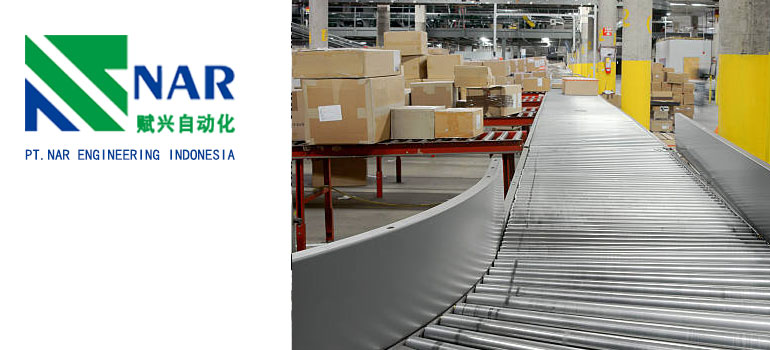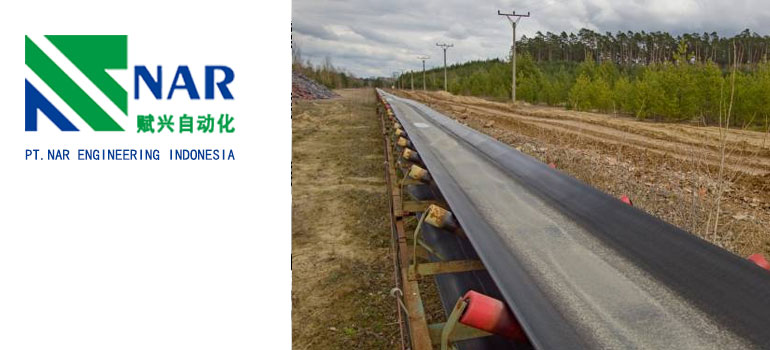Summary:
Innovation at Work: Harnessing the Power of Conveyor Belt Solutions for Success
Enhancing Efficiency with Advanced Conveyor Belt Solutions
Sustainability and Eco-Friendly Practices in Conveyor Belt Solutions
Innovation in Safety and Compliance with Conveyor Belt Solutions
Customization and Tailored Solutions for Diverse Industries
When we talk about using conveyor belt solutions to improve efficiency, we are actually discussing a revolutionary method in modern industry that is not only technological innovation, but also a rethinking of our production methods. Let’s delve deeper into how to fully leverage the power of conveyor belt solutions to achieve success.
Enhancing Efficiency with Advanced Conveyor Belt Solutions
When it comes to enhancing efficiency with advanced conveyor belt solutions, we’re not just talking about upgrading technology; we’re discussing a transformative approach to how industries operate. Let’s delve deeper into how these solutions are revolutionizing efficiency:
Streamlining Operations: Redefining Workflow Efficiency
In today’s fast-paced industrial landscape, every second counts. Advanced conveyor belt solutions streamline operations by optimizing material flow, reducing manual handling, and minimizing downtime. With seamless integration into existing workflows, these systems enable businesses to achieve unparalleled efficiency gains, ensuring that materials move swiftly and smoothly from one process to the next.
Automating Material Handling: Precision and Reliability
Gone are the days of labor-intensive material handling. Advanced conveyor belt solutions leverage automation to precisely control the movement of materials, eliminating human error and ensuring consistent, reliable performance. By automating tasks such as sorting, diverting, and merging, these systems enhance throughput, minimize bottlenecks, and maximize productivity, driving operational efficiency to new heights.
Harnessing IoT Technologies: Real-Time Insights for Optimal Performance
The integration of Internet of Things (IoT) technologies takes conveyor belt solutions to the next level. By equipping conveyor systems with sensors and connectivity capabilities, businesses gain real-time visibility into operational performance, allowing for proactive maintenance, predictive analytics, and data-driven decision-making. With insights into factors such as conveyor speed, material flow, and equipment health, businesses can optimize processes, prevent costly breakdowns, and continuously improve efficiency.
In essence, enhancing efficiency with advanced conveyor belt solutions isn’t just about upgrading equipment; it’s about reimagining how industries operate. By streamlining operations, automating material handling, and harnessing IoT technologies, businesses can achieve unprecedented levels of efficiency, productivity, and competitiveness in today’s dynamic marketplace.
Sustainability and Eco-Friendly Practices in Conveyor Belt Solutions

When we talk about sustainability and eco-friendly practices in conveyor belt solutions, we’re not just focusing on efficiency; we’re also prioritizing environmental stewardship and responsible manufacturing practices. Let’s explore how conveyor belt solutions are paving the way for a greener future:
Eco-Friendly Materials: Promoting Sustainable Manufacturing
Conveyor belt solutions are increasingly utilizing eco-friendly materials in their construction, such as recycled rubber and plastics, as well as renewable resources like bamboo and hemp. By reducing reliance on non-renewable resources and minimizing the environmental impact of production processes, these sustainable materials help mitigate carbon emissions and conserve natural resources, contributing to a more sustainable manufacturing ecosystem.
Energy-Efficient Designs: Minimizing Carbon Footprint
In addition to eco-friendly materials, conveyor belt solutions incorporate energy-efficient designs and technologies to minimize their carbon footprint. From low-friction materials and lightweight components to regenerative braking systems and energy-efficient motors, these innovations optimize energy consumption and reduce operating costs while lowering greenhouse gas emissions and environmental impact.
Recycling and Waste Reduction: Closing the Loop
Conveyor belt solutions play a crucial role in promoting recycling and waste reduction throughout the product lifecycle. By facilitating the movement of recyclable materials through sorting and processing facilities, these systems enable businesses to recover valuable resources, reduce landfill waste, and support a circular economy. Additionally, conveyor systems can be integrated with waste-to-energy technologies to convert organic waste into renewable energy, further enhancing sustainability and resource efficiency.
In summary, sustainability and eco-friendly practices in conveyor belt solutions are essential for promoting environmental responsibility and reducing the ecological footprint of industrial operations. By embracing eco-friendly materials, energy-efficient designs, and recycling initiatives, conveyor belt solutions contribute to a more sustainable future, where efficiency and environmental stewardship go hand in hand.
Innovation in Safety and Compliance with Conveyor Belt Solutions
When it comes to innovation in safety and compliance with conveyor belt solutions, we’re not just talking about meeting regulatory standards; we’re prioritizing the well-being of workers and creating a safer work environment. Let’s explore how advancements in safety technology are revolutionizing conveyor belt solutions:
Ensuring Worker Safety: Advanced Safety Features and Training Programs
Worker safety is paramount in any industrial setting, and conveyor belt solutions are no exception. Today’s conveyor systems are equipped with advanced safety features such as emergency stop buttons, safety interlocks, and motion sensors to minimize the risk of accidents and injuries. Additionally, comprehensive training programs ensure that workers understand safe operating procedures and are equipped with the knowledge and skills to identify and mitigate potential hazards in conveyor operations.
Compliance with Regulatory Standards: Meeting Industry Regulations
Meeting regulatory standards is a non-negotiable aspect of conveyor belt solutions. Whether it’s OSHA regulations in the United States or similar standards in other regions, businesses must ensure that their conveyor systems comply with all applicable safety regulations and guidelines. Regular inspections, audits, and compliance checks help ensure that conveyor systems meet or exceed industry standards, providing workers with a safe and secure work environment.
Continuous Improvement: Evolving Safety Practices for a Safer Work Environment
Innovation in safety is an ongoing process, and conveyor belt solutions are continuously evolving to enhance safety standards and practices. From the development of new safety technologies to the implementation of best practices and industry standards, businesses are committed to continuously improving safety in conveyor operations. This includes investing in research and development, collaborating with safety experts, and fostering a culture of safety awareness and accountability among workers.
In summary, innovation in safety and compliance with conveyor belt solutions is essential for protecting workers, preventing accidents, and ensuring regulatory compliance. By leveraging advanced safety features, comprehensive training programs, and a commitment to continuous improvement, businesses can create a safer work environment and mitigate the risks associated with conveyor operations.
Customization and Tailored Solutions for Diverse Industries
When it comes to customization and tailored solutions for diverse industries, conveyor belt solutions are leading the way in meeting the unique needs and challenges of businesses across various sectors. Let’s delve into how these solutions are reshaping the landscape of industrial operations:
Industry-Specific Applications: Meeting the Unique Needs of Various Sectors
Every industry has its own set of requirements and challenges, and conveyor belt solutions are tailored to address these specific needs. Whether it’s the food and beverage industry requiring hygienic design features, the automotive sector needing heavy-duty materials handling capabilities, or the pharmaceutical industry demanding precise product tracking and traceability, conveyor systems are customized to meet the exact specifications of each industry.
Modular Design Options: Flexibility for Customized Solutions
One of the key advantages of conveyor belt solutions is their modular design, which offers flexibility and scalability for customized applications. Modular conveyor systems can be easily reconfigured, expanded, or modified to accommodate changing production requirements, layouts, and processes. This modular approach allows businesses to adapt their conveyor systems to suit evolving needs and maximize operational efficiency.
Collaborative Approach: Partnering with Clients to Deliver Tailored Solutions
Successful customization of conveyor belt solutions requires a collaborative approach between conveyor manufacturers and their clients. By partnering closely with businesses to understand their unique challenges, goals, and operational requirements, conveyor suppliers can develop tailored solutions that address specific pain points and deliver tangible value. This collaborative process may involve custom engineering, prototyping, testing, and validation to ensure that the final solution meets or exceeds expectations.
In summary, customization and tailored solutions for diverse industries are essential for maximizing the effectiveness and efficiency of conveyor belt solutions. By offering industry-specific applications, modular design options, and a collaborative approach to problem-solving, conveyor suppliers can deliver customized solutions that optimize performance, productivity, and profitability for businesses across various sectors.

